But now, you download Windows Media player 12 and run it on Vista. Thanks to Mikasi2009 one of deviantART user founds the way to get Windows Media Player 12 on. I copy the file on the.
How to Cut, Copy, and Paste in Windows 1. Computers. Operating Systems. Windows 1. 0How to Cut, Copy, and Paste in Windows 1. By Andy Rathbone Windows 1. You can electronically cut or copy just about anything and then paste it just about anyplace else with little fuss and even less mess.

The beauty of the Windows 1. Pc Auto Shutdown Free Download Crack Fifa. The quick . Use Copy when you want to duplicate something, leaving the original intact. Keyboard shortcut: Hold down Ctrl and press X to cut or C to copy. Right- click the item’s destination and choose Paste. You can right- click inside a document, folder, or nearly any other place.
Keyboard shortcut: Hold down Ctrl and press V to paste. Selecting things to cut or copy. Before you can shuttle pieces of information to new places, you have to tell Windows exactly what you want to grab. The easiest way to tell it is to select the information with a mouse. In most cases, selecting involves one swift trick with the mouse, which then highlights whatever you’ve selected.
To select text in a document, website, or spreadsheet: Put the mouse arrow or cursor at the beginning of the information you want and hold down the mouse button. Then move the mouse to the end of the information and release the button. That action selects all the stuff lying between where you clicked and released. On a touchscreen, double- tap one word to select it. To extend your selection, touch the highlighted word again, keeping your finger pressed on the glass. Slide your finger along the glass until you’ve reached the area where the highlighting should stop. Remove your finger to select that portion of text.
Be careful after you highlight a bunch of text. If you accidentally press the K key, for example, the program replaces your highlighted text with the letter k. To reverse that calamity, choose Undo from the program’s Edit menu (or press Ctrl+Z, which is the keyboard shortcut for Undo). Windows highlights the selected text, changing its color for easy visibility. To select any files or folders: Simply click a file or folder to select it. To select several items, try these tricks: If all the files are in a row: Click the first item in the bunch, hold down the Shift key, and then select the last item. Windows highlights the first and last items as well as everything in between.
If the files aren. If you absentmindedly click the mouse someplace else, your highlighted text or file reverts to its boring self, and you’re forced to start over. To delete any selected item, be it a file, paragraph, or picture, press the Delete key. Alternatively, right- click the item and choose Delete from the pop- up menu.
Cutting or copying your selected goods. After you select some information, you’re ready to start playing with it. You can cut it or copy it. Then right- click your destination and choose Paste. How do you know which one to choose? Choose Cut to move information. Cutting wipes the selected information off the screen, but you haven’t lost anything: Windows stores the cut information in a hidden Windows storage tank called the Clipboard, waitingfor you to paste it.
Feel free to cut and paste entire files to different folders. When you cut a file from a folder, the icon dims until you paste it. Press Esc to cancel the cut, and the icon reverts to normal.
Choose Copy to make a copy of the information. Compared with cutting, copying information is quite anticlimactic. Whereas cutting removes the item from view, copying the selected item leaves it in the window, seemingly untouched. Copied information also goes to the Clipboard until you paste it. To save a picture of your entire screen, press the Windows key+Prt. Scr. Windows quickly saves the image in a file called Screenshot inside your Pictures folder. Do it again, and the screenshot is named Screenshot (2).
Pasting information to another place. After you cut or copy information to the Windows Clipboard, it’s checked in and ready for travel. You can paste that information nearly anyplace else. Pasting is relatively straightforward: Open the destination window and move the mouse pointer or cursor to the spot where you want the stuff to appear.
Right- click the mouse and choose Paste from the pop- up menu. Or, if you want to paste a file onto the desktop, right- click on the desktop and choose Paste. The cut or copied file appears where you’ve right- clicked.
The Paste command inserts a copy of the information that’s sitting on the Clipboard. The information stays on the Clipboard, so you can keep pasting the same thing into other places if you want. To paste on a touchscreen, hold down your finger where you’d like to paste the information. When the menu pops up, tap Paste. Some programs, including File Explorer, have toolbars along their tops, offering one- click access to the Cut, Copy, and Paste buttons.